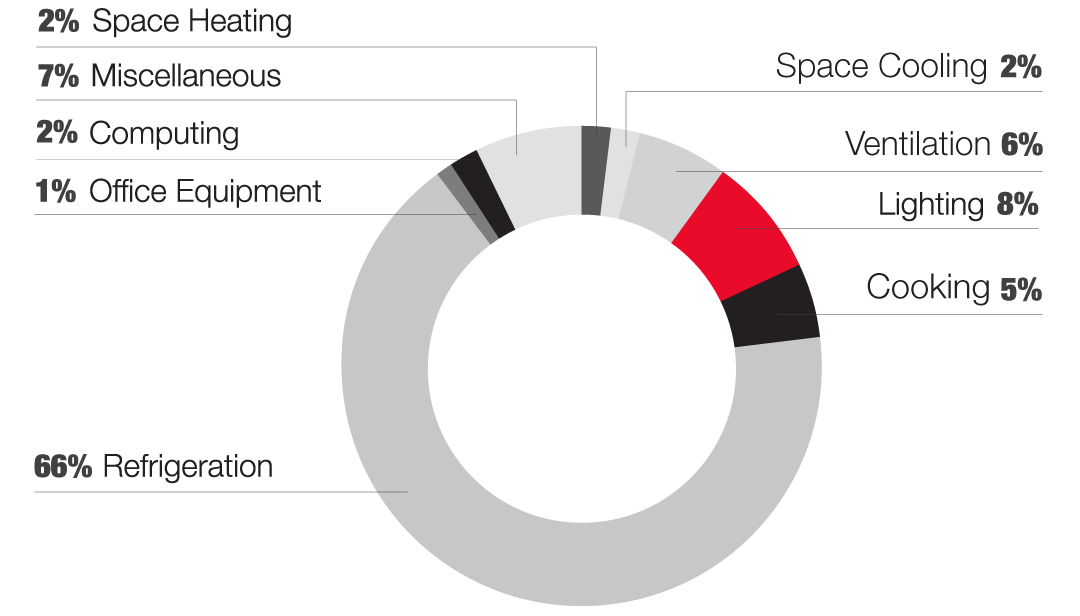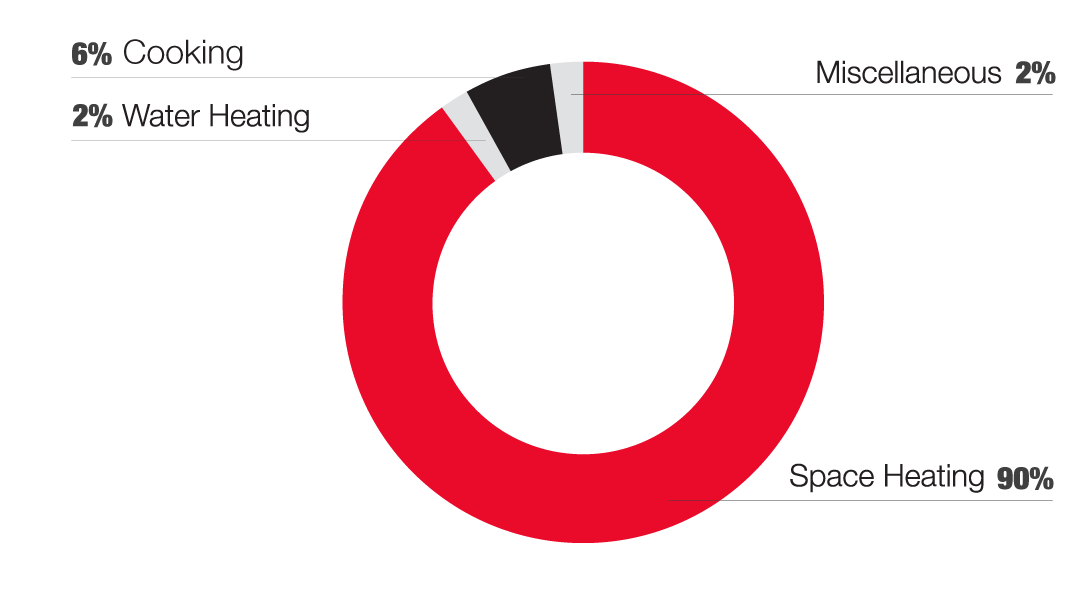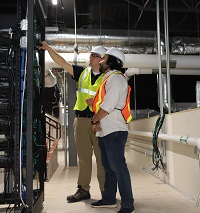Grab energy savings for your convenience store
Did you know the average convenience store in the Midwest spends nearly $20,000 per year on electricity and natural gas? Food prep and storage are the largest energy consumers in most stores, but there are ways to mitigate these costs. Bundling upgrades and saving on improvements is easier than ever with the Small Business Express program, which connects you with qualified contractors and rebates to create lasting efficiency savings for your convenience store.
What uses the most energy in convenience stores
The following pie charts illustrate what convenience stores activities use and cost the most. Cooking, refrigeration and space heating account for a large fraction of energy use in convenience stores. Electricity end uses include (from the top, counterclockwise): 2% space heating, 7% miscellaneous, 2% computing, 1% office equipment, 66% refrigeration, 5% cooking, 8% lighting, 6% ventilation and 2% space cooling. Natural gas end uses include (from the top, counterclockwise): 2% miscellaneous, 6% cooking, 2% water heating and 90% space heating.
Electricity End Uses

Natural Gas End Uses

What's costing convenience stores the most
| End Uses | Average Electric Cost/Month | Average Gas Cost/Month | Energy Savings Potential |
|---|---|---|---|
| Refrigeration | $996 | - |
High
|
| Space Heating, Cooling and Ventilation | $151 | $150 |
Moderate
|
| Lighting | $121 | - |
High
|
| Cooking | $75 | $10 |
Moderate
|
Small Business Express is here to lend a hand
Small Business Express makes it easy for you to get professional guidance to identify energy-saving opportunities. Eligible rebates can help lower your out-of-pocket cost to replace failing equipment, and help you save energy and money long term.
Ways to Save

A typical convenience store’s refrigeration equipment is its largest energy user with a monthly cost of $996.
- Simple: Check and replace seals around walk-in coolers and freezers. Check temperature settings to ensure they are at recommended levels; between -14° and -8°F for freezers and 35° and 38°F for refrigerators. Clean cooling coils on the back of all units to ensure efficient operation.
- Low cost: Service your refrigeration equipment every two years to ensure refrigeration levels have not decreased and the system is working properly.
- Capital investments: Upgrade to ENERGY STAR certified reach-in refrigerator and freezer models. Install anti-sweat heater controls for coolers or freezers with glass doors. Replace inefficient motors with electronically commutated motors in walk-in and reach-in coolers and freezers.

Heating and cooling equipment is another area with a variety of methods to save energy and money.
- Simple: Seal around windows and doors with new caulk and weather stripping every few years.
- Low cost: Service equipment and change filters regularly.
- Capital investment: Replace older systems, such as air conditioners and furnaces, with high-efficiency models and add insulation.

Lighting upgrades can be implemented to save energy and money as well as reduce maintenance.
- Simple: Turn lights off when a space is not in use.
- Low cost: Install motion sensors in restrooms and other rooms with minimal traffic so that lights turn off automatically.
- Capital investment: Replace incandescent and fluorescent lights with LEDs to see savings of up to 50%! LEDs also have a longer lifespan resulting in reduced replacements. Upgrade to LED refrigerated display case lighting.

Cooking equipment costs $85 per month between electric and natural gas for a typical convenience store. There are a variety of methods to lower this cost.
- Simple: Turn cooking equipment off during idle time.
- Low cost: Ensure all equipment is maintained, functioning properly, and install electric igniters on gas stoves.
- Capital investments: Upgrade to ENERGY STAR certified equipment, such as ENERGY STAR ovens, steamers, hot-food holding cabinets, rice cookers and hoods.

See how your store compares
Energy Use Intensity (EUI) is a common measure used to benchmark a building’s energy use as a factor of its size. To calculate EUI for your business, total your electric bills for one year, then divide by your building’s square footage; repeat for natural gas. If the score is lower than those listed below, you are using less energy than most.
|
Average EUI for Convenience Stores in the Midwest
|
|
|---|---|
|
Electricity
|
Natural Gas
|
|
48.3 kWh/square foot
|
0.7 therms/square foot
|
Call us today at 800-432-8583 to learn about tools that can help you with benchmarking your facility.
Other Resources